Hybrid cars with manual transmission blend fuel efficiency and driver engagement, offering a unique driving experience. While rare, models like the Honda Insight and CR-Z pioneered this concept.
Overview of Hybrid Cars
Hybrid cars combine an internal combustion engine with an electric motor, offering improved fuel efficiency and reduced emissions. They operate by switching between engine and motor or using both simultaneously. Hybrids are designed to minimize environmental impact while maintaining performance. Popular types include parallel hybrids, where both power sources drive the wheels, and series hybrids, where the engine charges the battery. Hybrid technology reduces reliance on fossil fuels, lowering operating costs and emissions. Their eco-friendly nature and cost savings have made them increasingly popular. Hybrids are a key part of the automotive industry’s shift toward sustainability, appealing to environmentally conscious drivers seeking practical solutions without sacrificing comfort or functionality.
What is a Manual Transmission?
A manual transmission, also known as a stick shift, is a type of gearbox that requires the driver to manually change gears using a clutch pedal and a gearshift. It allows drivers to control the torque and speed of the vehicle, offering a more engaging and precise driving experience. Unlike automatic transmissions, manual transmissions rely on the driver’s skill to synchronize the clutch and shift gears smoothly. This system is often preferred by driving enthusiasts for its tactile feedback and potential fuel efficiency benefits. However, it requires practice to master and can be less convenient in heavy traffic. Manual transmissions are less common in modern vehicles but remain popular among those who enjoy a hands-on driving experience.
Combining Hybrid Technology with Manual Transmission
Combining hybrid technology with a manual transmission creates a unique driving experience that balances fuel efficiency and driver engagement. This integration allows the hybrid system to work seamlessly with the manual gearbox, enabling precise control over gear shifts. The clutch pedal operates traditionally, but the hybrid system optimizes power delivery from both the internal combustion engine and electric motor. This setup enhances fuel economy while maintaining the tactile feedback and driving excitement of a manual transmission. However, the complexity of synchronizing hybrid components with manual shifting has limited its widespread adoption. Despite this, models like the Honda CR-Z have successfully implemented this combination, offering a distinct option for enthusiasts who value both efficiency and driving involvement.
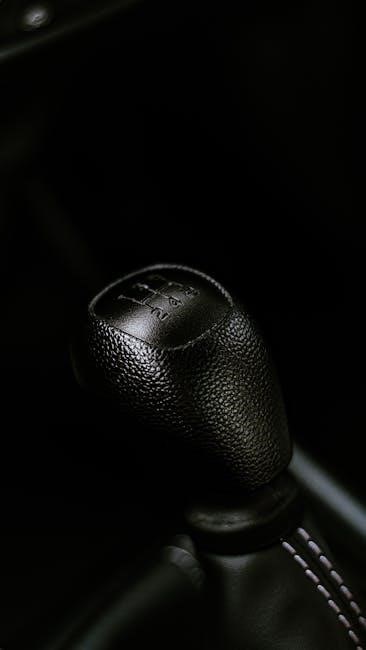
History of Hybrid Cars with Manual Transmission
The first hybrid cars with manual transmission emerged in the early 2000s, pioneered by Honda with models like the Insight and Civic Hybrid, blending efficiency and driver control.
Early Models and Their Impact
The Honda Insight, introduced in 2000, was the first hybrid car sold in the U.S., featuring a manual transmission. Its innovative Integrated Motor Assist (IMA) system combined an internal combustion engine with an electric motor, offering improved fuel efficiency while retaining the driving engagement of a manual gearbox. This model set the stage for future hybrids with manual transmissions, such as the Honda Civic Hybrid and CR-Z. These early models demonstrated that hybrid technology could coexist with manual transmissions, appealing to eco-conscious drivers who preferred the control and responsiveness of shifting gears themselves. Their impact was significant, proving that efficiency and driver engagement could be harmoniously combined.
The Rise and Fall of Manual Hybrids
Manual hybrids experienced a brief surge in popularity, driven by models like the Honda Insight and CR-Z, which offered a unique blend of efficiency and driver engagement. These cars appealed to enthusiasts who valued both fuel savings and the tactile experience of shifting gears. However, the market for manual hybrids declined as automatic transmissions became more efficient and consumer preferences shifted toward convenience. Additionally, stricter emissions standards and the complexity of integrating manual transmissions with hybrid systems made them less viable. Today, manual hybrids are rare, with most manufacturers focusing on automatic or continuously variable transmissions. Despite their decline, manual hybrids remain a cherished option for a niche audience seeking a balance between performance and eco-friendliness.
Notable Models with Manual Transmission
Several hybrid models have famously offered manual transmissions, catering to driving enthusiasts. The Honda Insight (2000-2006) was the first hybrid car in the U.S. market and featured a manual option. The Honda Civic Hybrid (2003-2011) also included a manual transmission, blending efficiency with driver engagement. The Honda CR-Z (2011-2016) stood out as a sporty hybrid coupe with a manual gearbox, appealing to performance-oriented drivers. These models showcased the potential of combining hybrid technology with manual transmissions, offering a unique driving experience. While rare, they remain iconic choices for those seeking both fuel efficiency and the joy of manual shifting.
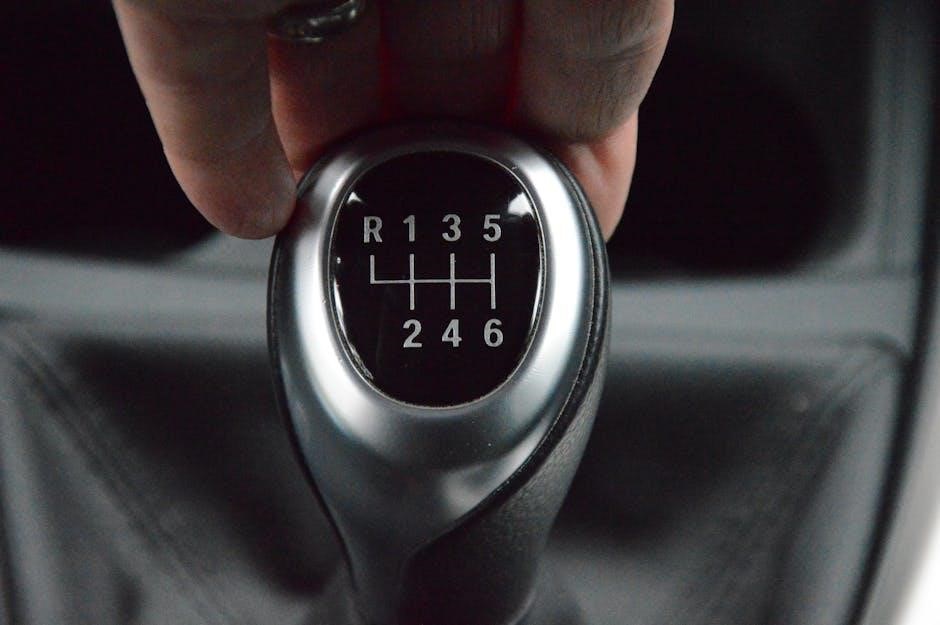
How Hybrid Cars with Manual Transmission Work
Hybrid cars with manual transmission combine an internal combustion engine and electric motor, allowing drivers to shift gears manually for enhanced control and efficiency.
Hybrid Powertrain Basics
A hybrid powertrain combines an internal combustion engine with one or more electric motors, optimizing fuel efficiency and reducing emissions. The system seamlessly switches between engine and electric power or uses both simultaneously. In manual transmission hybrids, the driver controls gear shifts, enhancing engagement while maintaining efficiency. The electric motor assists during acceleration, recaptures energy via regenerative braking, and supports the engine during high-load conditions. This synergy reduces reliance on the engine, lowering fuel consumption and emissions. The battery stores energy for the electric motor, charged through regenerative braking and engine power. This balanced approach allows hybrid cars with manual transmissions to deliver improved mileage and performance compared to traditional vehicles.
Integration of Manual Transmission
Integrating a manual transmission into a hybrid system requires precise coordination between the engine, electric motor, and gearbox. The clutch pedal allows drivers to disconnect the engine and motor from the transmission, enabling manual gear shifts. This setup preserves the driver’s control and engagement while maintaining hybrid efficiency. The system ensures smooth transitions between engine and electric power during shifting, minimizing energy loss. Advanced electronics manage the interaction between the motor and transmission, optimizing performance and fuel efficiency. This integration allows hybrid cars to deliver improved mileage and reduced emissions while offering the tactile experience of a manual gearbox, appealing to driving enthusiasts who value both efficiency and control.
Benefits of Manual Transmission in Hybrids
Manual transmissions in hybrids offer distinct advantages, combining fuel efficiency with enhanced driver engagement. They provide better control over gear shifts, allowing drivers to optimize power delivery and fuel consumption. The tactile experience of shifting gears appeals to enthusiasts, fostering a more connected driving experience. Additionally, manual transmissions are generally lighter and less complex than automatics, reducing overall vehicle weight and improving energy efficiency. This simplicity can lead to lower production costs and increased reliability. Furthermore, manual hybrids often achieve slightly better fuel economy in city driving due to driver-controlled shifts, making them a practical choice for eco-conscious drivers who prefer an interactive driving experience.
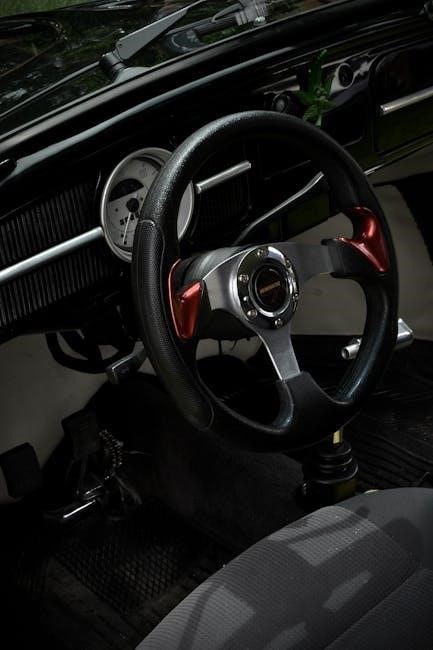
Challenges of Hybrid Cars with Manual Transmission
Hybrid cars with manual transmission face technical complexities, low market demand, and efficiency trade-offs, making them less common despite their unique appeal to driving enthusiasts.
Technical Difficulties
Integrating a manual transmission into a hybrid system presents significant technical challenges. The coordination between the internal combustion engine, electric motor, and manual gearbox requires precise synchronization to maintain efficiency and performance; The clutch mechanism must disengage the engine during electric-only operation, complicating the powertrain design. Additionally, the hybrid system’s software must seamlessly manage transitions between engine and motor power, further adding complexity. These technical hurdles make developing hybrid cars with manual transmissions more difficult compared to traditional automatic hybrids, limiting their widespread adoption despite their unique appeal to driving enthusiasts.
Market Demand and Sales
Hybrid cars with manual transmissions occupy a niche market, with historically low sales due to limited consumer demand. Most buyers prioritize convenience and efficiency, favoring automatics. Models like the Honda Insight and CR-Z, which once offered manual options, have been discontinued. The low take rate for manuals, especially outside sports cars, has discouraged manufacturers from producing more. However, Toyota’s recent patent filings suggest potential interest in reviving manual hybrids. Despite this, current market availability is sparse, with no new models widely offered. The shift toward automatics and CVTs in hybrids reflects broader industry trends, making manual hybrids a rare choice for enthusiasts seeking both efficiency and driving engagement.
Efficiency and Performance Trade-offs
Hybrid cars with manual transmissions offer a unique balance of fuel efficiency and driving engagement, but they come with trade-offs. While manuals provide better driver control and potential performance, they often fall short of the efficiency achieved by automatic hybrids. For instance, the Honda CR-Z manual hybrid delivered lower MPG ratings compared to its automatic counterparts. The integration of a manual gearbox with hybrid technology can complicate powertrain synchronization, slightly reducing fuel efficiency. However, for enthusiasts, the enhanced driving experience and precise control often outweigh these minor efficiency losses. This trade-off makes manual hybrids appealing to a niche audience seeking both eco-friendliness and dynamic performance.
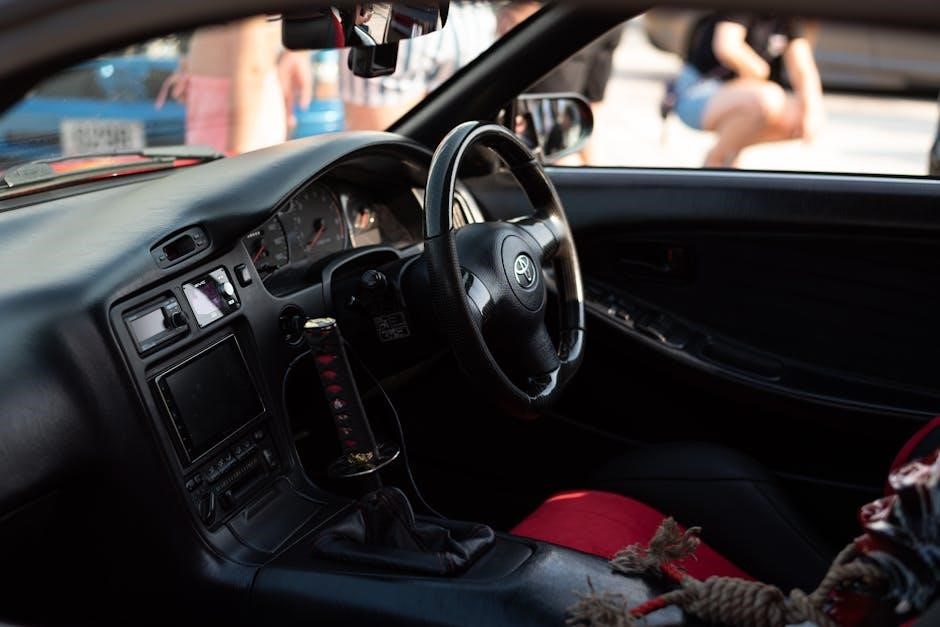
Future of Hybrid Cars with Manual Transmission
Toyota’s patent for a hybrid-specific manual transmission hints at future possibilities. Advancements in transmission tech and shifting consumer preferences may revive manual hybrids, appealing to driving enthusiasts.
Advancements in Transmission Technology
Recent advancements in transmission technology are paving the way for hybrid cars with manual transmissions to become more efficient and driver-friendly. Toyota’s patent for a hybrid-specific manual transmission highlights a system where the clutch can be controlled by both the driver and the car’s computer, optimizing gear shifts and reducing fuel consumption. This innovation addresses the technical challenges of integrating manual transmissions into hybrid powertrains, ensuring smoother transitions between electric and combustion engine power. As transmission technology evolves, we can expect more seamless integration of manual gearboxes with hybrid systems, potentially leading to wider adoption and improved performance for enthusiasts who prefer manual driving.
Consumer Preferences and Trends
Consumer preferences for hybrid cars with manual transmission are niche but growing among driving enthusiasts. Many drivers seek the thrill of manual shifting combined with the eco-friendliness of hybrids. While automatics dominate the hybrid market, there is a dedicated audience for manual hybrids, particularly in Europe, where manual transmissions are more prevalent. The demand for such vehicles is relatively low, but manufacturers like Toyota are exploring ways to cater to this group. As fuel efficiency and performance become priorities, the appeal of manual hybrids may grow, especially if more models become available. This trend reflects a balance between tradition and innovation, appealing to those who value both control and sustainability.
Manufacturer Innovations and Patents
Manufacturers like Toyota are innovating in hybrid manual transmissions, with a recent patent for a system allowing driver or computer-controlled clutch operation. This technology aims to blend efficiency with driver engagement. Honda has historically led in this space, with models like the Insight, Civic Hybrid, and CR-Z offering manual options. These systems integrate the clutch and electric motor seamlessly, ensuring smooth operation without compromising fuel efficiency. While current options are limited, ongoing R&D suggests future models may combine hybrid technology with manual transmissions more effectively, catering to enthusiasts who value both performance and sustainability. These innovations highlight the industry’s commitment to meeting niche demands while advancing eco-friendly solutions.
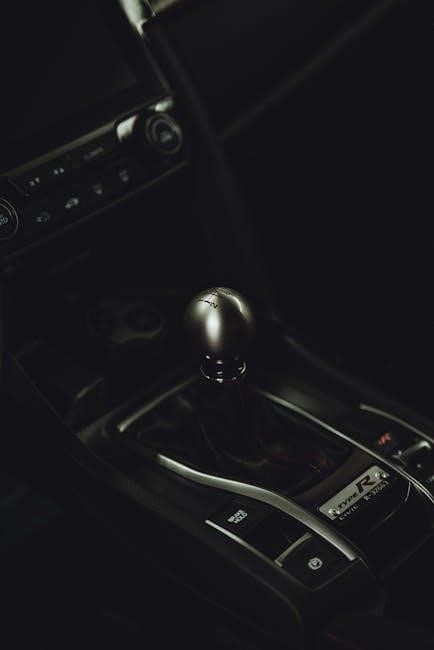
Driving Experience of Hybrid Cars with Manual Transmission
Hybrid cars with manual transmission deliver a unique blend of fuel efficiency and driver engagement, offering precise control and a thrilling experience while maintaining eco-friendly performance.
Performance and Fuel Efficiency
Hybrid cars with manual transmission strike a balance between performance and fuel efficiency, offering drivers a dynamic experience while maintaining eco-friendly credentials. The manual gearbox enhances driver engagement, allowing precise control over gear shifts, which can optimize fuel economy. Models like the Honda CR-Z and Civic Hybrid demonstrate this blend, with the CR-Z achieving up to 37 mpg highway. The integration of an internal combustion engine and electric motor ensures efficient power delivery, while the manual transmission provides a sporty feel. This combination appeals to enthusiasts who value both performance and environmental responsibility, making manual hybrids a unique choice for those seeking a thrilling yet efficient drive.
Driver Engagement and Control
Hybrid cars with manual transmission offer a unique driving experience, combining eco-friendliness with the thrill of manual control. The manual gearbox allows drivers to engage more deeply with the vehicle, providing a sense of connection and precision. Shifting gears manually enables drivers to optimize power delivery and fuel efficiency, enhancing the overall driving experience. This tactile interaction appeals to enthusiasts who value control and responsiveness. While hybrids are known for their efficiency, the manual transmission adds a layer of driver involvement, making the car feel more dynamic and engaging. For those who enjoy the art of driving, manual hybrids provide a satisfying blend of performance and eco-consciousness.
Comparison with Automatic Hybrids
Manual hybrids differ significantly from their automatic counterparts, primarily in driving dynamics and efficiency. While automatic hybrids prioritize seamless acceleration and convenience, manual hybrids offer greater driver control and engagement. The manual transmission allows for more precise gear shifts, which can enhance fuel efficiency in skilled hands. However, automatic hybrids often achieve better EPA ratings due to optimized gear ratios and continuous power delivery. Manual hybrids also tend to have a more direct connection between the driver and the vehicle, making them appealing to enthusiasts. Despite these differences, both transmissions aim to balance performance and eco-friendliness, catering to distinct driver preferences and needs.
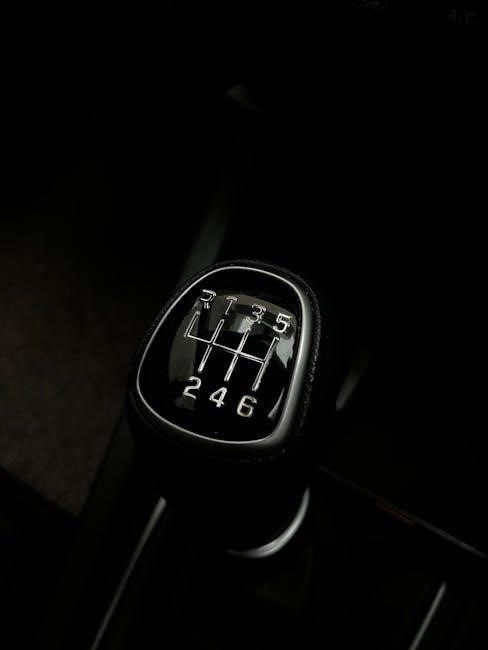
Environmental Impact of Hybrid Cars with Manual Transmission
Hybrid cars with manual transmission reduce emissions and improve fuel efficiency, offering an eco-friendly option. They combine lower environmental impact with enhanced driver control, promoting sustainable driving practices.
Emissions and Fuel Efficiency
Hybrid cars with manual transmission significantly reduce emissions and enhance fuel efficiency. By combining an internal combustion engine with an electric motor, these vehicles minimize environmental impact. The manual transmission optimizes power delivery, improving mileage in city and highway driving. For instance, the Honda CR-Z achieved EPA ratings of 31 mpg city and 37 highway, showcasing the potential of this configuration. The integration of a manual gearbox allows drivers to control gear shifts, further optimizing fuel use. This blend of hybrid technology and manual control not only lowers emissions but also provides a cost-effective, eco-friendly driving solution, appealing to environmentally conscious drivers who prefer an engaging driving experience.
Comparison with Traditional Manual Cars
Hybrid cars with manual transmission offer distinct advantages over traditional manual vehicles. They combine the fuel efficiency of hybrids with the driver engagement of a manual gearbox. While traditional manuals excel in performance and control, hybrids add an electric motor, reducing emissions and enhancing mileage. For example, the Honda Insight hybrid manual achieves better fuel economy than its non-hybrid counterparts. However, hybrids may weigh more due to the added electric components, slightly affecting handling. Overall, hybrid manuals provide a balance of efficiency and driving enjoyment, appealing to eco-conscious enthusiasts who prefer a hands-on driving experience without sacrificing environmental benefits.
Sustainability and Eco-Friendliness
Hybrid cars with manual transmission are designed to minimize environmental impact while delivering exceptional fuel efficiency. By combining an internal combustion engine with an electric motor, these vehicles significantly reduce emissions and lower carbon footprints. The manual transmission further enhances eco-friendliness by optimizing fuel consumption, especially in city driving conditions. For instance, models like the Honda Insight and CR-Z achieve superior mileage compared to their automatic counterparts. This blend of hybrid technology and manual control not only appeals to environmentally conscious drivers but also supports global efforts to reduce greenhouse gas emissions. As a result, hybrid manuals are a sustainable choice for those seeking both efficiency and driver engagement.

Market Availability and Consumer Options
Hybrid cars with manual transmission are rare, with limited models like the Honda Insight and CR-Z historically available. Current options are scarce, making them niche choices.
Current Models with Manual Transmission
Hybrid cars with manual transmission are exceedingly rare in today’s market. Historically, models like the Honda Insight, Civic Hybrid, and CR-Z offered manual options, but these have largely been discontinued. Currently, no mainstream hybrid vehicles are widely available with a manual transmission. However, Toyota has shown interest in developing a manual hybrid system, potentially reviving this niche. For now, enthusiasts must rely on used models or await future innovations. The scarcity of manual hybrids reflects market priorities favoring automatics for efficiency and convenience, leaving manual transmission hybrids as a rare and sought-after choice for driving purists.
Used and Discontinued Models
Hybrid cars with manual transmission are largely limited to discontinued models. The Honda Insight (2000-2006) and Civic Hybrid (2003-2015) were pioneers, offering manual options for eco-conscious drivers. The Honda CR-Z (2011-2016) also featured a manual transmission, blending sportiness with hybrid efficiency. These models, while no longer in production, remain popular among enthusiasts for their unique combination of fuel efficiency and driver engagement. Other manufacturers have not widely adopted manual hybrids, making these used models highly sought after. For those seeking a manual hybrid, the used market is the primary source, as modern hybrids overwhelmingly favor automatic transmissions.
Global Market Variations
Hybrid cars with manual transmission have varying availability across global markets. In Europe, where manual transmissions are more popular, some hybrid models were offered with manual options, such as the Honda Insight and CR-Z. However, these models were often limited to specific regions. In contrast, the U.S. market saw fewer manual hybrid options, with most hybrids favoring automatic transmissions. Toyota has shown interest in developing manual hybrids for global markets, potentially reviving this niche. Despite regional differences, manual hybrids remain rare, reflecting broader market trends toward automatic and CVT transmissions in hybrid vehicles. This variation highlights the diverse preferences of global consumers.
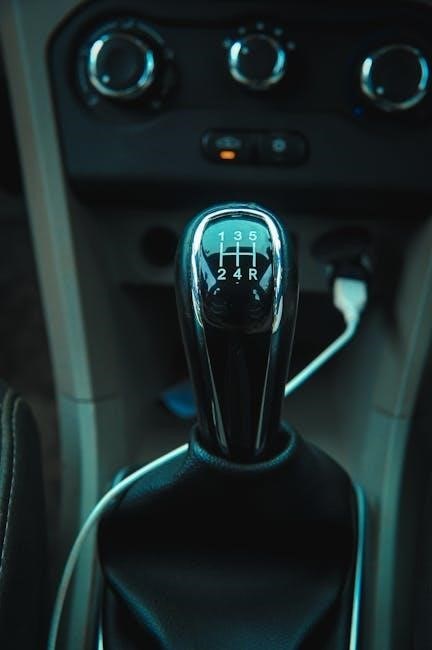
Maintenance and Cost Considerations
Maintenance for hybrid cars with manual transmission involves unique needs, balancing hybrid system care and transmission upkeep. Costs may vary, but fuel efficiency often offsets higher initial expenses.
Maintenance Requirements
Maintenance for hybrid cars with manual transmission requires attention to both the hybrid system and the manual gearbox. Regular checks on the transmission fluid, clutch, and gear components are essential. The hybrid system, including the battery and electric motor, needs periodic inspections to ensure optimal performance. Drivers should also monitor the condition of the clutch, as frequent shifting can lead to wear. Additionally, the unique integration of the manual transmission with the hybrid powertrain may require specialized knowledge or tools for repairs. Despite these needs, the fuel efficiency of hybrid cars can help reduce long-term maintenance costs related to fuel consumption.
Cost Efficiency and Savings
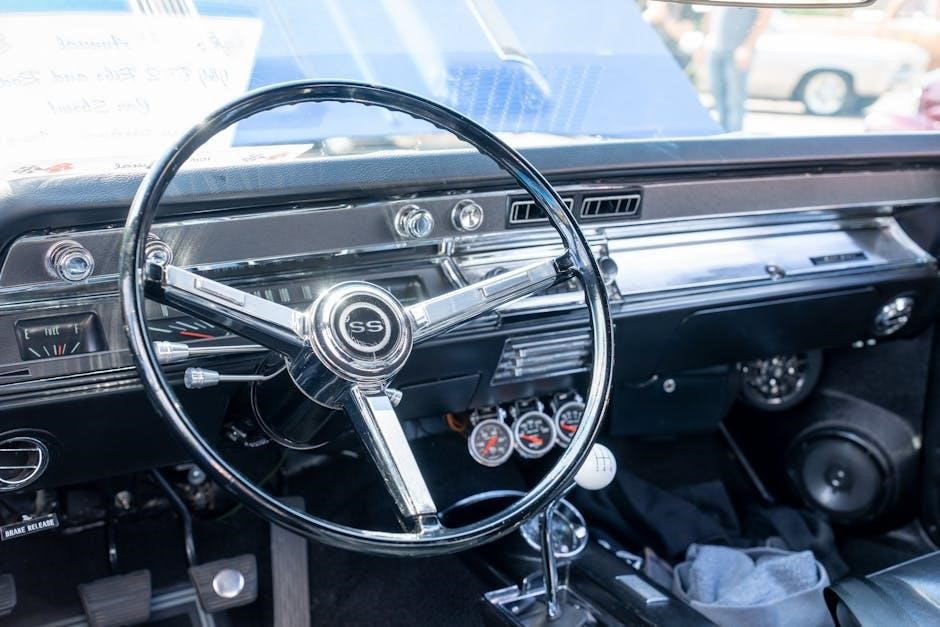
Hybrid cars with manual transmission offer significant cost efficiency and savings. Their fuel-efficient nature reduces fuel consumption, lowering long-term expenses. Additionally, the manual transmission often comes at a lower purchase price compared to automatic hybrids. Maintenance costs are also manageable, as manual transmissions typically require less complex repairs than automatics. The hybrid system further enhances savings by reducing emissions, which can lead to lower tax incentives in some regions. Over time, the combination of improved fuel economy and lower maintenance needs makes these vehicles a cost-effective choice for eco-conscious drivers seeking both savings and performance. This balance of efficiency and affordability makes them appealing for budget-minded enthusiasts.
Long-Term Ownership Benefits
Hybrid cars with manual transmission offer compelling long-term ownership benefits. Their fuel-efficient nature ensures lower fuel costs over time, while the manual gearbox often requires less maintenance than automatics. The hybrid system’s reliability and durability contribute to reduced repair expenses, making these vehicles a practical choice. Additionally, hybrids generally retain higher resale value due to their eco-friendly reputation. For drivers who prioritize sustainability and cost-effectiveness, manual hybrids provide a balance of performance and efficiency. Their unique combination of technologies appeals to environmentally conscious enthusiasts, ensuring a satisfying ownership experience. Overall, these cars deliver both financial and environmental advantages, making them a wise investment for the long haul.
Hybrid cars with manual transmission offer a unique blend of efficiency and driver engagement, appealing to eco-conscious enthusiasts who value both performance and sustainability.
Final Thoughts on Hybrid Cars with Manual Transmission
Hybrid cars with manual transmission occupy a niche market, appealing to drivers who seek both fuel efficiency and the thrill of manual driving. While rare, these vehicles, such as the Honda Insight and CR-Z, demonstrate the potential to merge eco-friendliness with driver engagement. The integration of manual gearboxes in hybrid systems presents technical challenges but also offers unique benefits, including improved control and lower emissions. Despite limited availability, these cars cater to enthusiasts who value performance and sustainability. As automotive technology evolves, the future may hold more innovative solutions, but for now, manual hybrids remain a distinctive choice for those who appreciate the blend of efficiency and driving excitement.
Recommendations for Potential Buyers
For those considering a hybrid car with a manual transmission, research is key. Look for models like the Honda Insight or CR-Z, which offer a unique blend of efficiency and driver engagement. Test-driving is essential to ensure compatibility with your driving style. Consider certified pre-owned options, as new manual hybrids are scarce. Weigh the benefits of lower fuel costs and emissions against the potential for higher maintenance costs. If eco-friendliness and driving excitement are priorities, a manual hybrid could be an excellent choice. However, be prepared for limited availability and a niche market. Balancing practicality and passion will guide your decision effectively.
The Role of Manual Hybrids in the Automotive Industry
Manual hybrids play a niche role in the automotive industry, catering to enthusiasts who value both efficiency and driving engagement. They bridge the gap between traditional combustion engines and hybrid technology, offering a unique experience. Despite their rarity, these vehicles demonstrate innovation in transmission integration, showcasing how hybrid systems can adapt to different drivetrain configurations. They also highlight the industry’s efforts to satisfy diverse consumer preferences, even as automatics dominate the hybrid market. While not mainstream, manual hybrids contribute to the industry’s evolution by proving that eco-friendly driving doesn’t have to compromise on driver involvement, thus preserving the appeal of manual transmissions in a rapidly changing automotive landscape.
